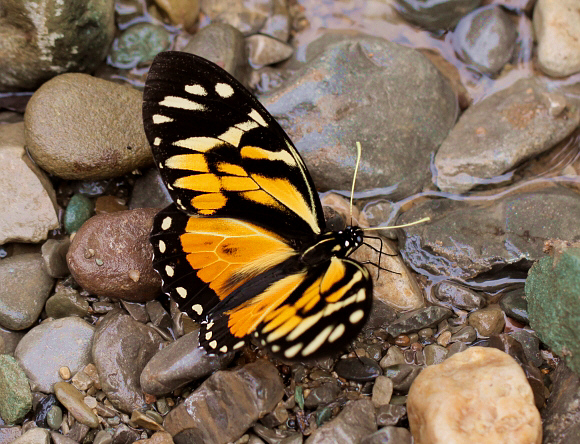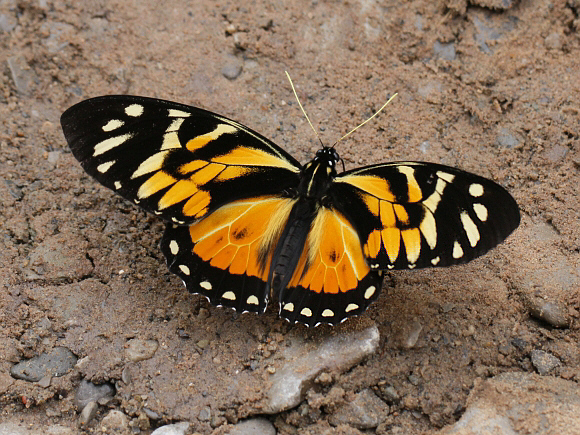
Introduction
The genus Pterourus includes 19 large Swallowtail butterflies. Amongst them are the huge Jamaican endemic P. homerus, and the Tiger Swallowtails multicaudata, eurymedon and glaucus, the latter of which occurs as far north as Alaska.
Most members of the genus look like fairly typical Swallowtails – tailed, marked with creamy-yellow bands on a black ground colour, and with red submarginal lunules on the underside hindwings.
P. zagreus is totally different in appearance from its congeners, and could easily be mistaken for a large Danaine, but a closer look reveals the anatomical features that identify it as a member of the Papilionidae – most noticeably the six long stilt-like legs, and the recurved antenna tips.
Pterourus zagreus is probably a mimic of the highly toxic Danaine Lycorea halia. Both species are members of the “Tiger complex”, a mimicry-ring comprising of many dozens of dark butterflies, all marked with orange and cream. The majority are toxic or unpalateable to birds, and are mimicked by smaller numbers of palatable species. Birds leave the palatable species alone, having learnt that the majority of tiger marked butterflies are distasteful.
The butterfly occurs in various geographical forms, from Costa Rica to Bolivia.

Habitats
This is primarily a butterfly of pre-montane cloudforests, occurring at altitudes between about 500-1600m.

Lifecycle
This appears to be unrecorded. The early stages of several other members of the genus Pterourus are well documented however, and are likely to be applicable to zagreus:
The eggs are round, and laid singly on the foodplants. The caterpillars when young resemble a bird dropping. When fully grown they are green, beautifully marbled with pink and brown. The thoracic segments are marked with a pair of “false eyes” with black and white pupils. If threatened the larva immediately withdraws it’s head, causing the thoracic segments to distend, and thereby greatly magnifying the size of the “eyes”. The resulting snake-like appearance is probably sufficient to startle or frighten a small predatory vertebrate.
Adult behaviour
Males are usually seen in one’s and two’s, puddling at the edges of mountain streams. If disturbed they fly up to perch on foliage at a height of about 5 – 10 metres, but return to drink at the water’s edge once the threat has passed.

